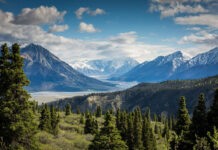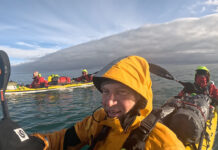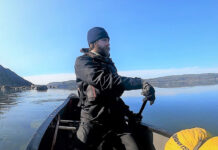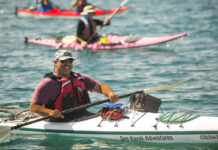We knew Poplar Rapids could give us some trouble. Driving in the van we discussed the continuous 800-meter entry feeding over an eight-foot horseshoe falls fanning out over a shallow ledge with most of the water bending around against the left bank. At lower water on a warm lazy summer afternoon trip in creek boats we’d eddy hopped down to the lip, scrubbed up on an exposed piece of granite, had a look over the edge, shoved ourselves back into the current and launched the drop.
Guide training: A multi-day whitewater adventure with tomorrow’s outdoor leaders
On a high water multi-day raft and kayak trip with college students of varying skills we were considering our other options. We knew there was another channel to the left. We’d heard it lost the gradient more gradually through winding shallow class II. We’d expected to be lining and dragging rafts off rocks, not putting them on their roofs.
Louise Urwin was driving the van. She was the kayak guide and instructor. Lou is a strong, beautiful, no-bullshit Kiwi with long list of whitewater accomplishments. Photographer Rob Faubert and I were in the bench seat leaning forward to be part of the conversation. Behind us were the 12 college students who signed up for the multi-day whitewater guide elective. If not for the smell of river, they could be any other group of college students dozing, plugged into Taylor Swift, or trying to remember where they’d left a friend’s bike after last Saturday night’s house party.
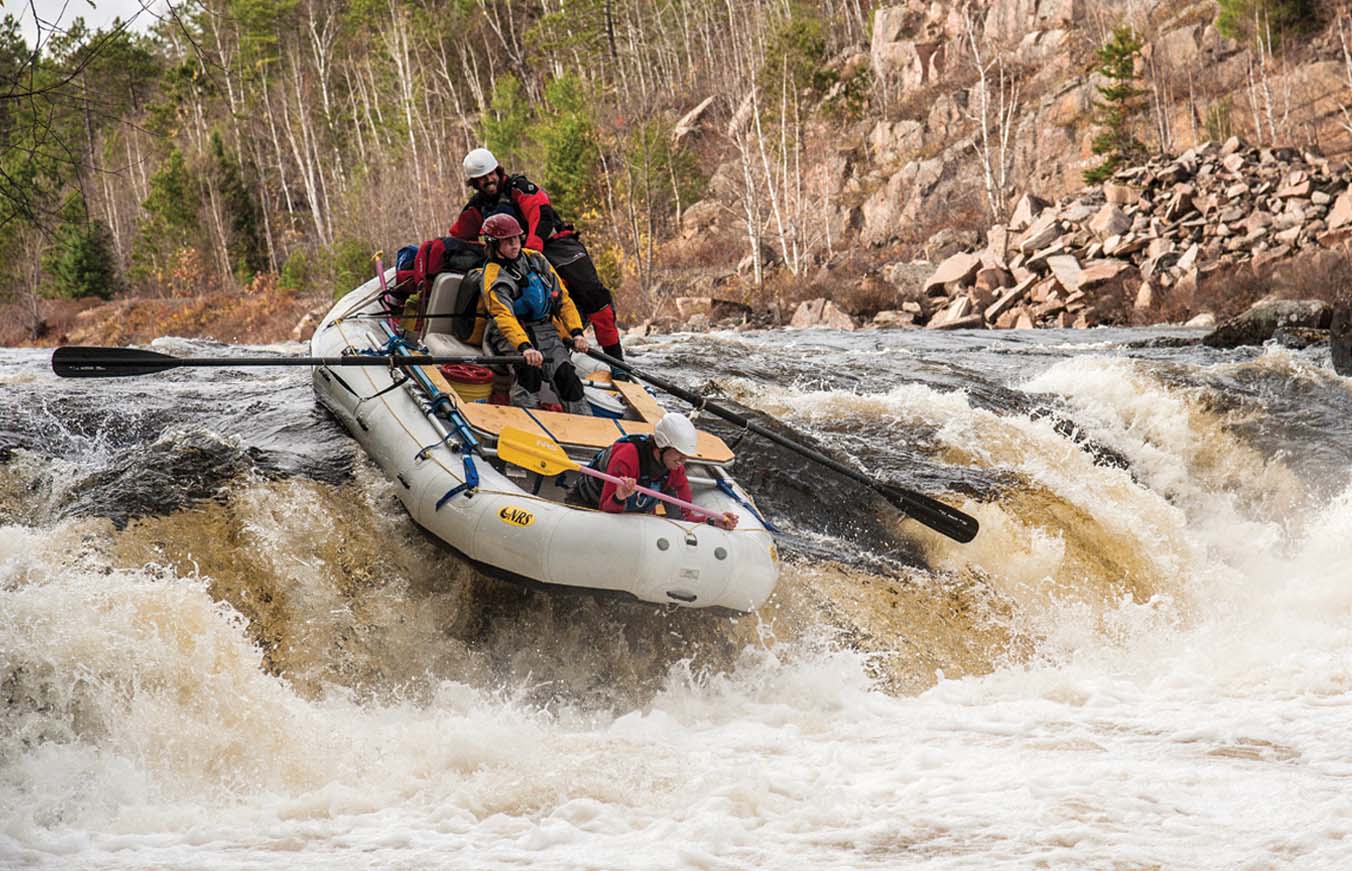
Jeff Jackson was riding shotgun. He’s our trip leader and the Outdoor Adventure program coordinator. He’s in his early 40s, athletic and wise. His river resume reads like a dirt bag 20-something’s bucket list, while his professional resume would make any mother proud. He’s an educator and professional guide who is all business.
When Jeff got wind that Algonquin College was creating an outdoor leadership program, he returned home to the Ottawa Valley from guiding jobs on the Green, Yampa and Cataract Canyon of the Colorado River so that he’d be in town for job postings. He was hired in May of 2000 and went to work developing the new Outdoor Adventure program and recruiting the first class of 70 students to arrive four months later.
This group, Jeff’s fourteenth batch of second year students, had already completed their fall camp orientation, a 10-day sea kayak trip and two other six-day electives, two of which had to be whitewater canoeing or whitewater kayak certification courses and raft guide training programs—prerequisites for this trip. It’s a grueling schedule with back-to-back weekend electives and classes Monday to Friday. Not all of their outdoor training can be jammed into the late summer when the water and weather are warm. This river trip needed to be pushed deeper into the fall when the water levels on the Petawawa River could be higher and the temperatures much lower.
Petawawa proving ground
The Petawawa River flows almost all the way across Ontario’s Algonquin Provincial Park. Thousands of whitewater canoeists have cut their teeth on the Petawawa, most paddling the second half of our trip, the three-to-four day section below Poplar Rapids. Above this classic summer weekend section, above where Poplar Rapids spills into Lake Travers, flows a less accessible, steeper and more continuous section of whitewater.
Twelve years ago Jeff and I began dragging creek boats up the abandoned Canadian National Railway line that borders this upper section of Petawawa. Back in the ‘80s guides from nearby rafting companies rigged a railway jigger handcart to pump rafts and equipment up the rail line for early big water spring runs. Today the Petawawa is not a commercially viable rafting run. It is too remote. The logistics are too complicated and, this time of year, it’s too cold for paying clients. But the Petawawa is exactly what Jeff needed for the program’s new multi-day whitewater guide elective.
When we slid down the scree slope of the old rail line into the moving water above McDonald Rapids, it was obvious right way that the students had a wide range of skills and confidence. Adrian, Nevin and Holly had guided this past summer. Their lifejackets were faded from the summer sun. They wore throw lines with their names and cell numbers scribbled on them. Some of kayakers had their own boats. They hit the eddy above the first drop with plenty of room to spare. The rest—well, they have enjoyed a longer stretch of river before the first drop.
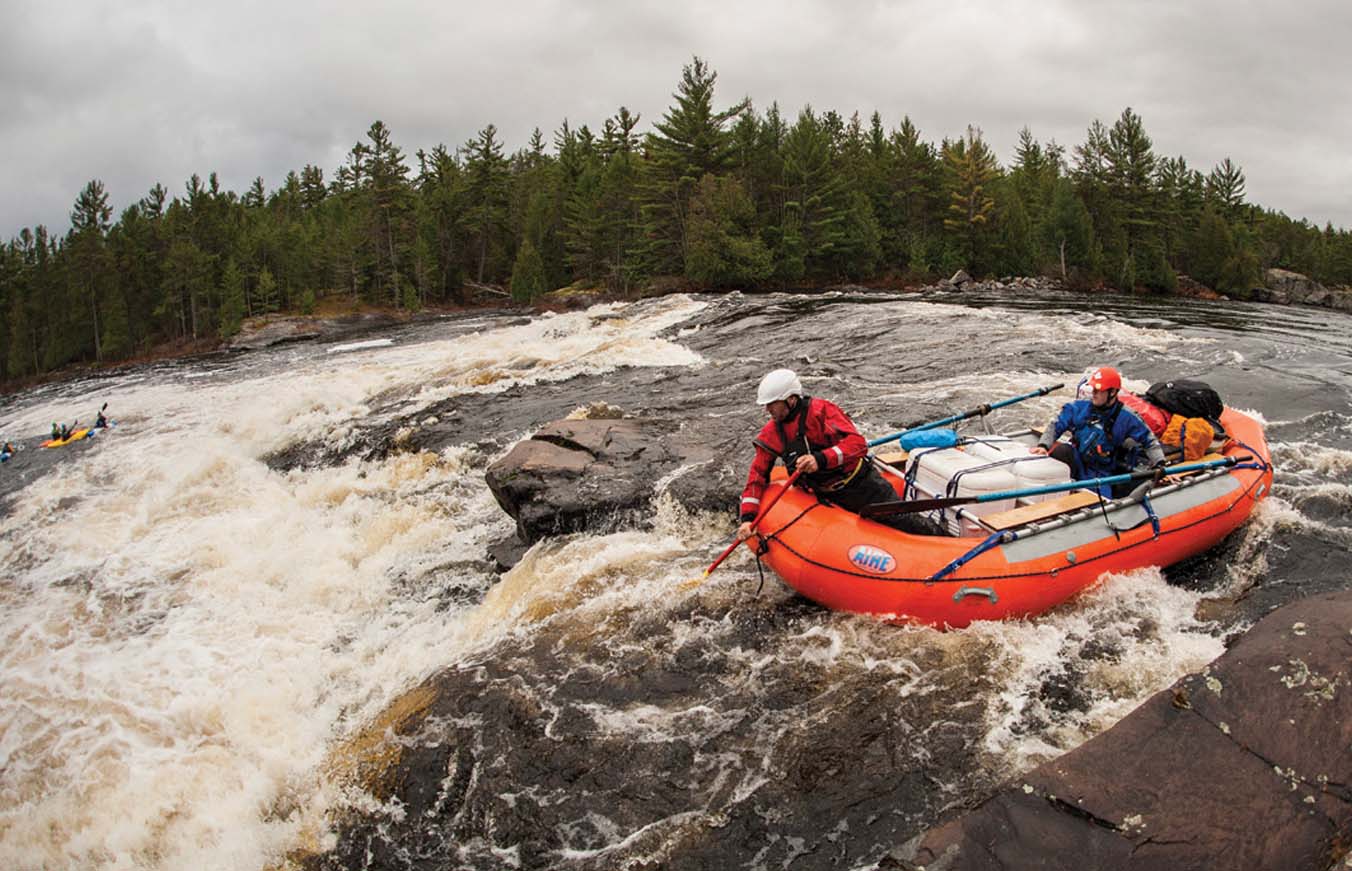
A prerequisite for this trip was a raft guide elective run on the Ottawa River, where commercial day trip rafting is a wham bam, thank you ma’am one-day affair. The Ottawa is big and deep and safe. The bigger the hits the bigger the tips, guides in my day used to say.
“Day guiding is so low consequence, the mentality is different. There is always a bail out to a road,” Jeff told the group as were scouting the first drop. “By taking away that access we add exposure to consequences. We need to look at every rapid differently. We need to always take the safest line possible.” We weren’t looking for big hits on this trip. We were looking to get down with all the people and equipment we started with.
Through McDonald Rapids, Devils Cellar and Rocky Chute they did a good job getting everyone down. Some of the lines weren’t pretty. We had some swimmers from the rafts. There were a couple wet exits from kayaks. The clean up and safety was quick and efficient. Kind of what I expected.
The bigger rapids we scouted from shore. Down the 1,000-meter series of six ledges known as the Temptations the students boat scouted with rolling cover looking out for the boats below and above you.
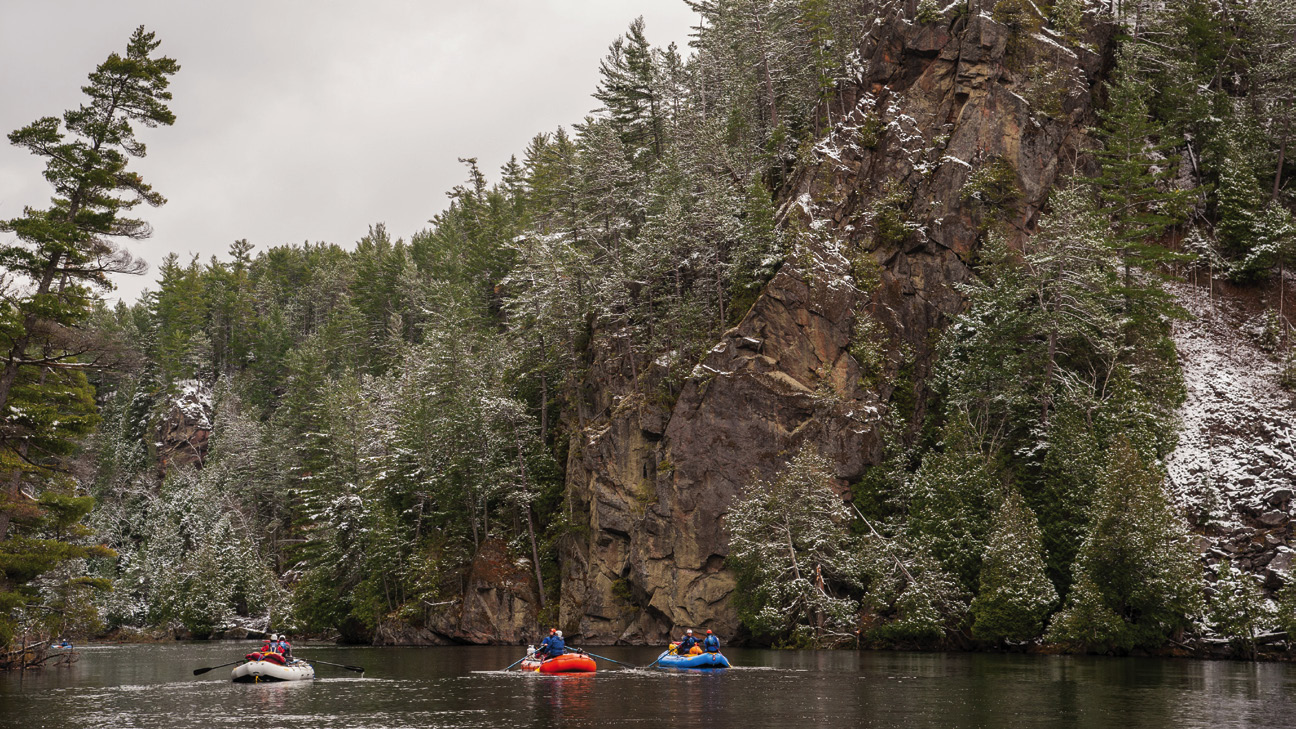
Lou ran mini clinics in the eddies along the way. Jeff took turns perching himself aboard student rafts. His ongoing narrative to them was, “What do you see? Where are you going?” Expedition rafting is all about controlling boat momentum and using the momentum of the river. “Pull down and slow down,” he reminds the students.
On multi-day rafting trips you don’t charge forward into meaty lines. You didn’t flip rafts on purpose. You try to never flip, ever. A full-loaded oar rigged raft on its roof is a dangerous mess of aluminum, oars and a truckload of food and equipment. A lost cooler on the Grand Canyon could be 21 days without bacon or beer—and no chance of tip for any guide.
Students gain hard-won experience
The Keeper is one of the last of the Temptation rapids. To the left it piles up into a small rock face. Most of the river goes straight through a maze of boulder islands and then over a ledge creating a smooth, shallow and deceivingly sticky recirculation—the Keeper. On a previous low water run a friend of mine swam out of her kayak in this sleeper of a hole. While this water level widened and deepened the lines, it also made the current pushier, and the hole munchier—munchy enough to flip our first raft. Half the group scurried around the river picking up swimmers and bits of gear—it seemed a perfect time for a cup of hot soup and a review lesson on rigging before Poplar Rapids.
Jeff wrote in the course outline: guides integrate paddling skills, on-river management and logistics planning in a multi-day whitewater trip format. Students learn logistics, planning for transportation, gear management and group travel. On-river group management integrates kayak and oar rig safety in a technical river setting. Multi-day trips take what they’ve learned in skills courses and plays it out in real life. We’d just had a little taste of that.
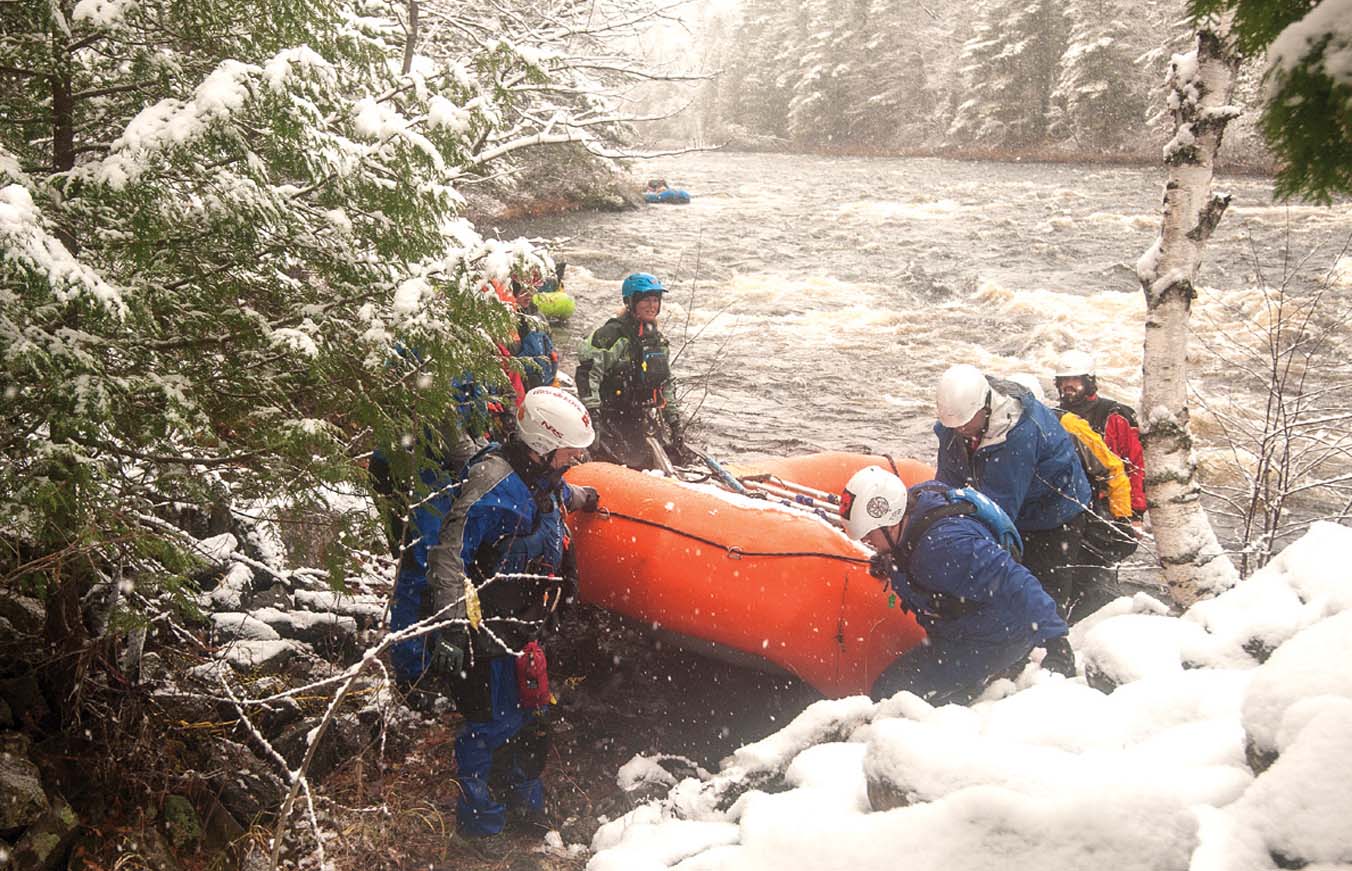
Twenty-five years ago my first guide manager told my group of trainees after an intensive two-week course that we didn’t know shit until we’d been guiding for at least two years. “You guys haven’t screwed up enough yet to know what you’re doing,” he shouted at us. “If you stick with it long enough you may eventually become competent river guides.” That was a tough pill to swallow when I was 21. If I ran into him today, I’d buy him a beer.
Jeff acknowledges the limits to technical training course electives. In a recent Outdoor Adventure program review, employers of graduates recommended that students have more expedition experience. They saw great value in expeditions for building leadership skills, judgment and competence. Competence is different than understanding. Competence is being able to apply what you know in whatever situations arise.
The left channel of the 800-meter-long Poplar Rapids began as we’d expected. Shallow and spread out. Boney. I cursed the tiny unavoidable pillows hidden everywhere just below the surface. They snagged the floor and bumped the blades of my oars.
Rob and I were way out in the middle when we both got the feeling. “I don’t like this,” was all Rob had to say. I didn’t either. We’d gotten the willies and started booking it for the river left shore. I looked upstream to signal the others; they’d already figured it out and were moving left.
Around the corner the wide channel came altogether. Our gentle class II sneak route was now constricted between the flooded riverbanks and a rock in the middle the size of the passenger van we rode in on. The approach from where we were tied up was sticky. The drop folded over into a hole with another hole right below stretching out past middle from the right shore. The rest below, as far as we could see, was shallow, fast moving and disappeared down and around another bend. We were way off the typical route and nowhere near a portage trail. Lou and her kayakers bushwhacked their boats through the thick balsam and cedar trees.
Rob and I ran our raft first. The slot was narrow so we removed our oars from the oarlocks and paddle guided our 14-footer over the drop. The front tubes buried in the seam throwing Rob forward over the front tubes and damn near in the drink. I held him in the raft by his PFD long enough for the boat to come back to level and drain so we could get left to avoid the second hole, get to shore and help set up safety.
Adrian was the strongest student guide with a keen eye for reading water. It was decided he’d run the next boat with Lou. The bigger 16-foot raft was pushed wide and off line at the top and it came over the lip sideways. The seam of the pourover swallowed the downstream tube and the momentum pushed the raft up and over on top of them. This could be really bad.
Whistles screamed over the roar of the water. At first we couldn’t see the either of the swimmers. It was shallower than we’d expected. The frame, and gear beneath, bounced off the river bottom and possibly off their heads. As the boat bounced past, Lou surfaced upstream and was trying to slow the raft down so Adrian could swim free.
I dove in the current and the two of us were able to stop the raft from carrying on further downstream. Adrian was still underneath. I feared that he was pinned between the raft and the rocky bottom. I hoped he was tucked up into one of the upside down compartments.
When he eventually flushed out he was pelted with throw bags. He had his river knife in one hand and with the other he grabbed a rope and was swung into the flooded cedars. Adrian, we learned later, had cut himself out of the bowline that had wrapped around his foot.
Time out to rest and take stock
When we finally made camp it was in the parking lot below Poplar where the Petawawa dumps into Lake Travers. It was almost dark. We’d hoped to be half way down the lake by now. When Adrian said he thought he bumped his head we knew this river day was over.

“That was too much,” Jeff told the group after dinner around the campfire. “We’d taken the most conservative choice presented to us but it was still too much exposure for me to be comfortable as the leader. I wouldn’t choose that level of exposure to consequences again with this group.”
We all were nodding agreement.
We discussed our decision to take the mystery channel and avoid the main line at Poplar. We reviewed the rescue and the clean up afterward. We discussed the environmental factors of high water level, short days and cold temperatures. Students shared stories from other trips they’d been on. We felt good about our decision to stay here for the night.
We were keeping an eye on Adrian. We’re camping in this put-in parking lot because it is the best point to get him out. If he showed any signs of trauma, we’d make a call and he’d be going home in the morning.
“I feel like we did everything right,” one student said. “I’m not sure what I would have done differently.”
Somebody suggested that next time Adrian should try harder to keep his boat off its roof. He seemed okay now, and it was okay to laugh. It felt good to laugh and blow off the stress of the day.
The Petawawa River would be better the other way around. It would have been nice if the swifty class II and III rapids were in the first few days. At least now the students had time to get comfortable in their kayaks. Those in the rafts would have three more days to finesse their oars. They’d practice moving slower than the current and they’d learn to take advantage of river features to assist their back ferries. They knew that now that we’d gotten to Lake Travers they could settle in for a few days of wilderness river travel and camping.
Guiding lessons extend beyond the final grade
The evaluation rubric for the course included leadership and behavior, boat management, group management, camp contributions and at the bottom of the chart was a lesson the students were to prepare and present.
Between river travel and meal preparation, building fires, tarps, the portage and shuffling about to keep warm in the snow there wasn’t time to present their mini lessons. Jeff and the students were okay with that. I’d all but forgotten this was part of their college course.
At first Jeff was running the show. Rob and I watched him take charge to organize the meals and call shots on the river. Over the next five days the students picked up the rhythm of big group multi-day river travel. This was part of his plan. Meals took half the time to prepare. Camp was set up and torn down, rafts were loaded and good decisions about the menu and river travel were all just happening as they should on a guided expedition.
To satisfy the college, Jeff must award a grade to each student. However, what these students truly learned will not appear on their transcripts. In fact they may not know what they’ve learned until much further down the road. If they stick with guiding long enough, if they screw up enough and if they face enough adversity, hard work and bad weather like we did on the Petawawa, a river manager I knew once would say they’d eventually make good river guides.
On our final morning the sun broke through the snow clouds. We layed our stiff wet gear in places the sun’s heat would thaw and soften the frozen fabric. The group decided on a simple breakfast to get us on the water and moving an hour earlier. When Jeff, Rob and I wandered over for coffee, the students asked if that would be okay, but really they were telling us what they’d already decided and what they had in store for us that day.
Scott MacGregor is the founder and publisher of Rapid magazine.
Feature photo: Robert Faubert



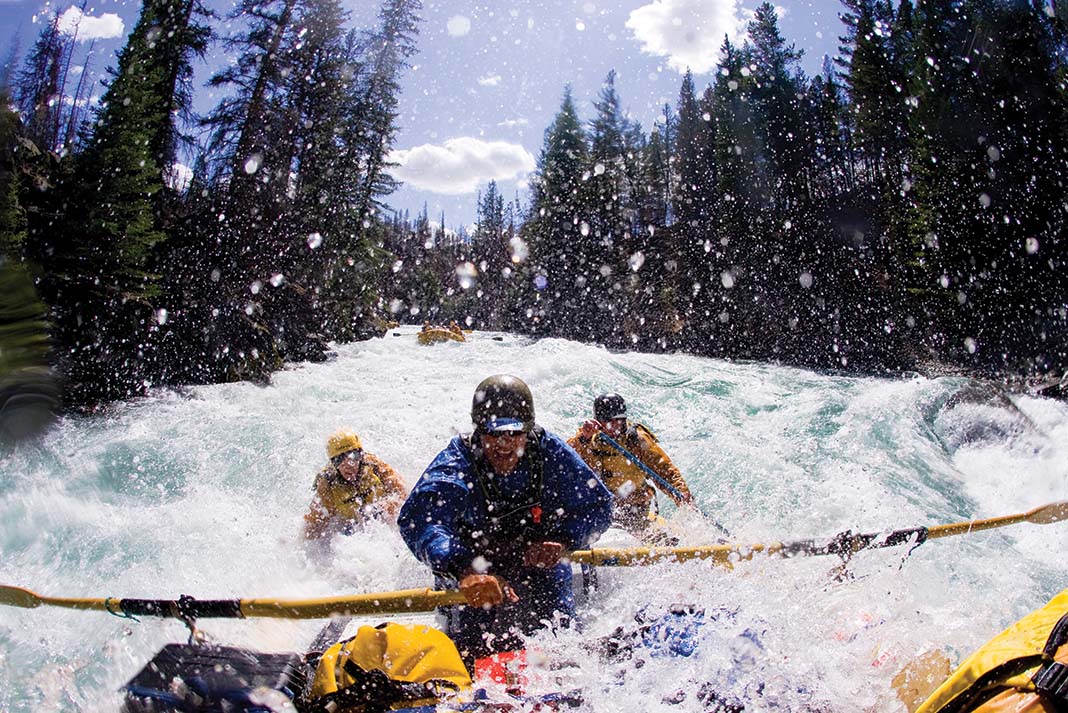
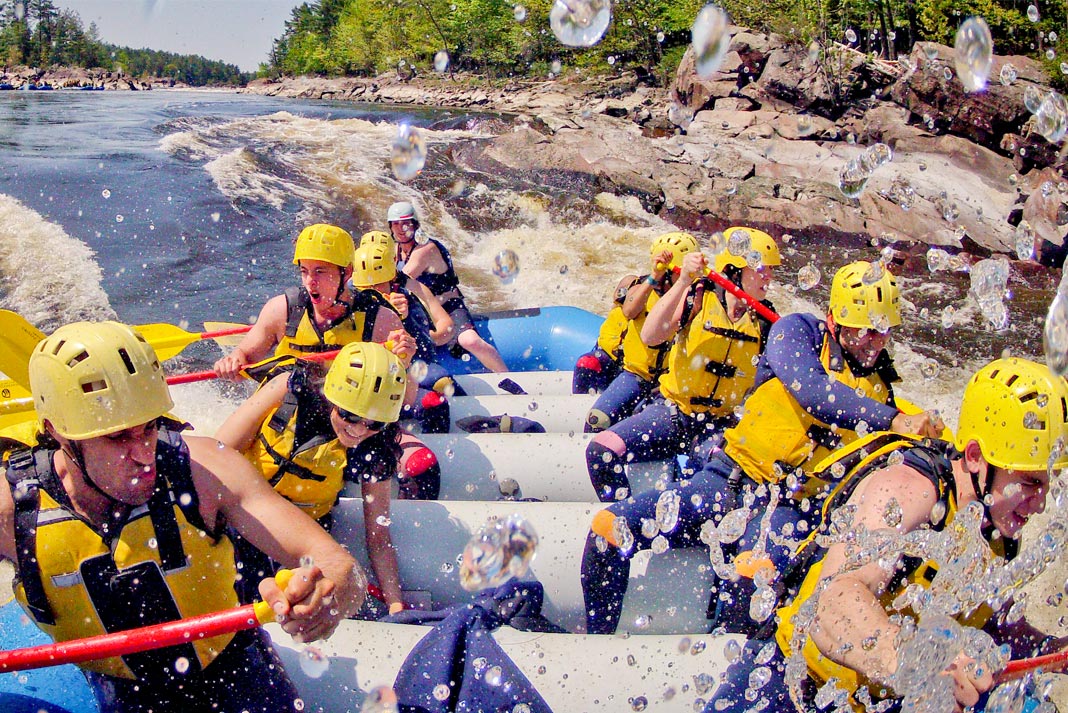
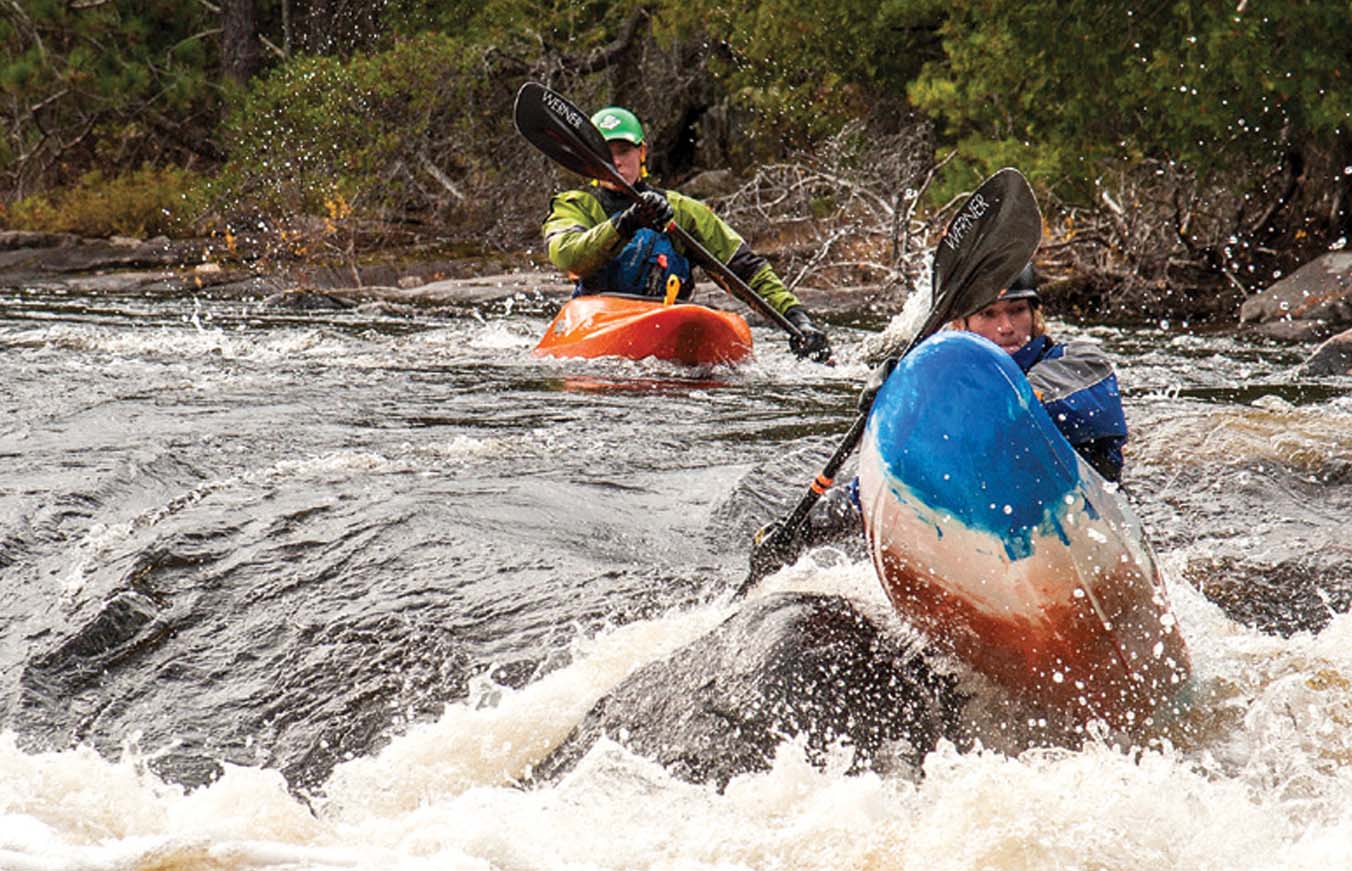
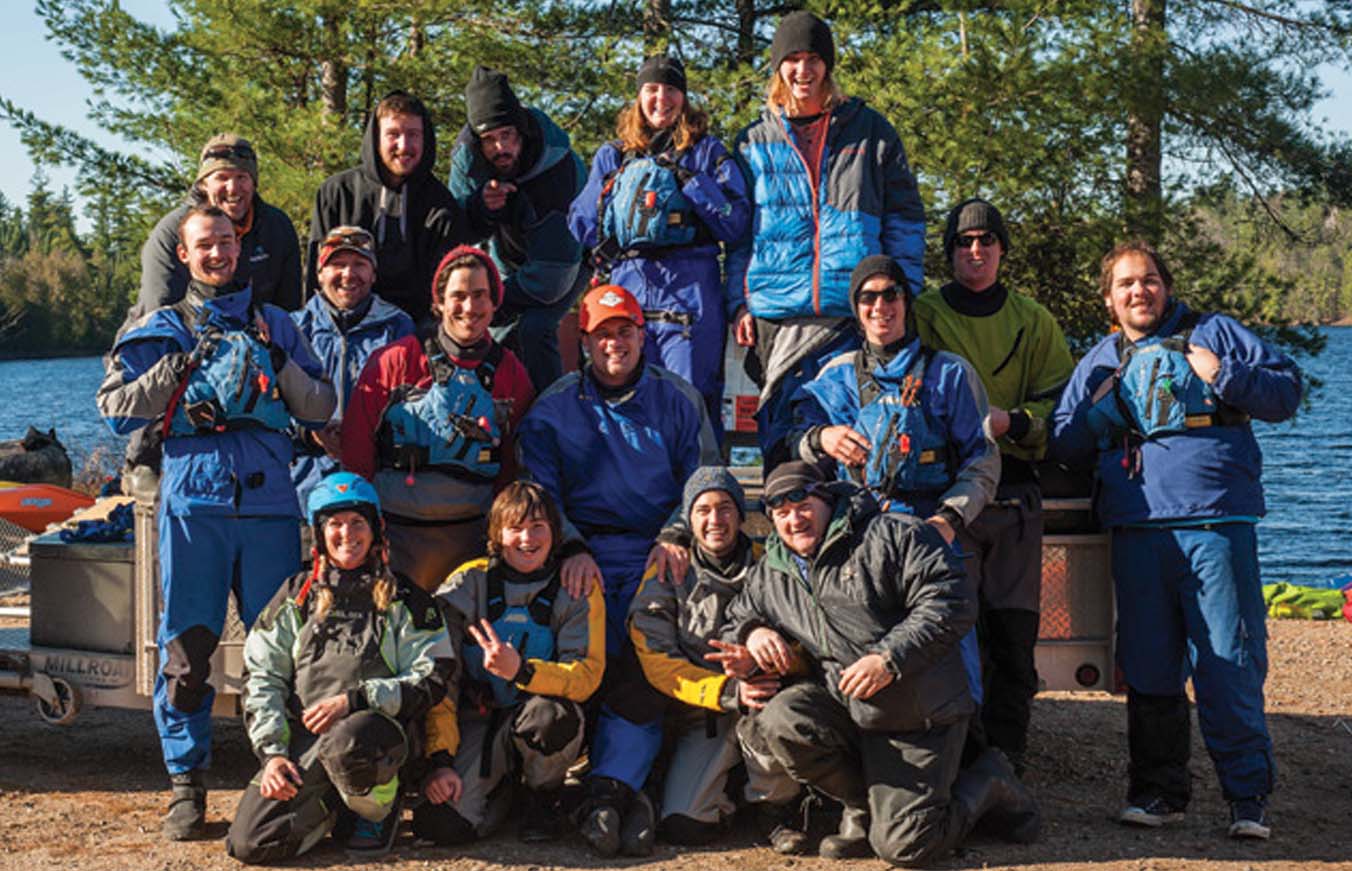
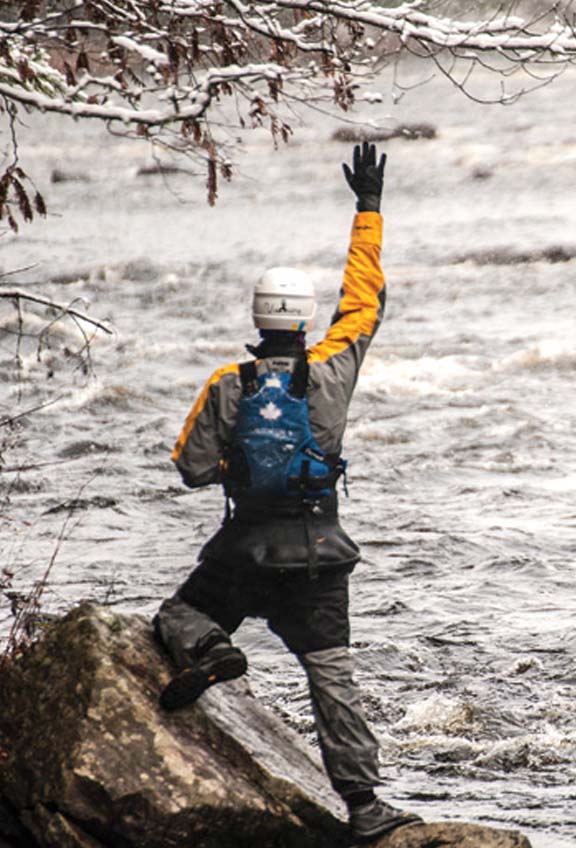
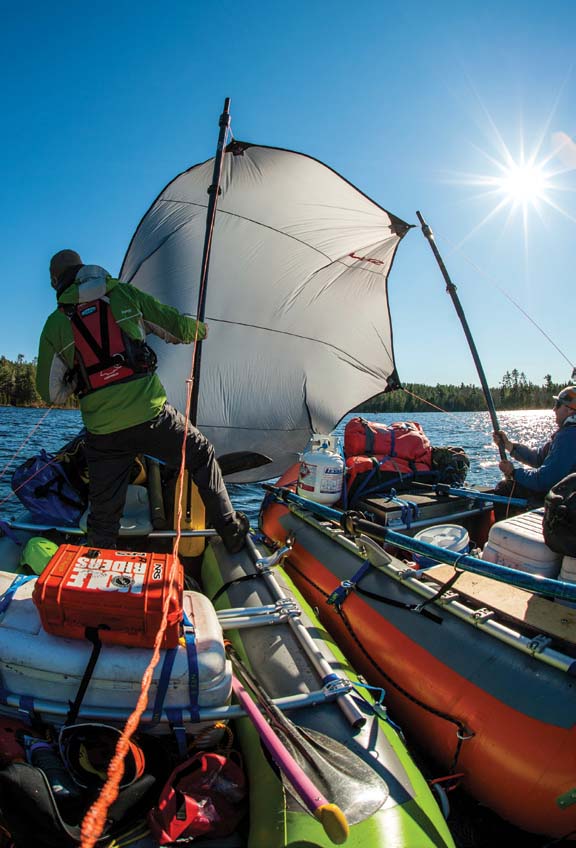
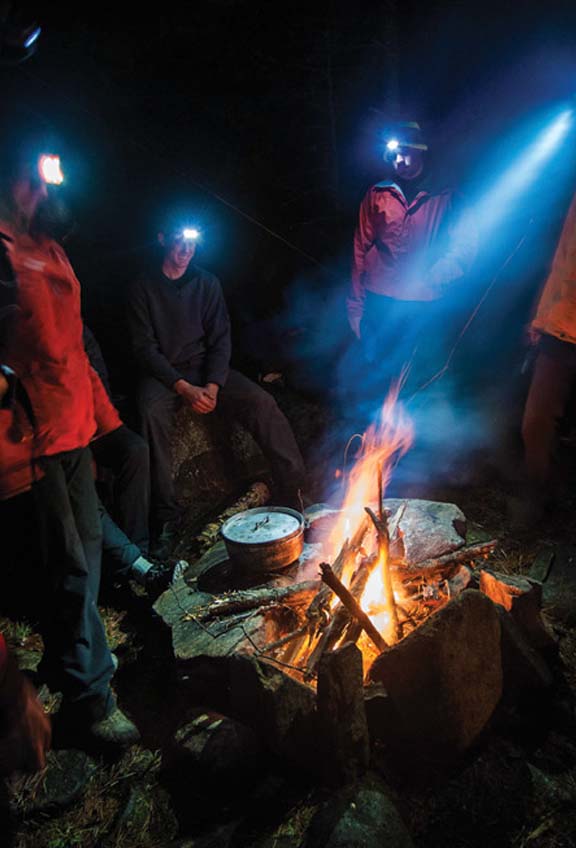
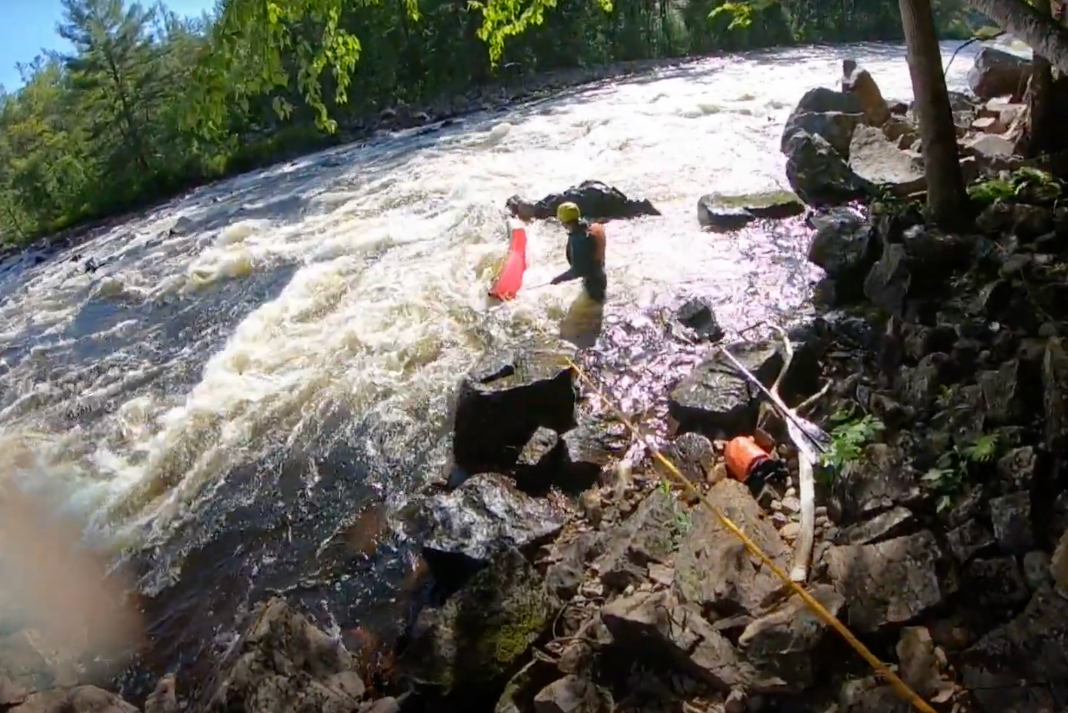
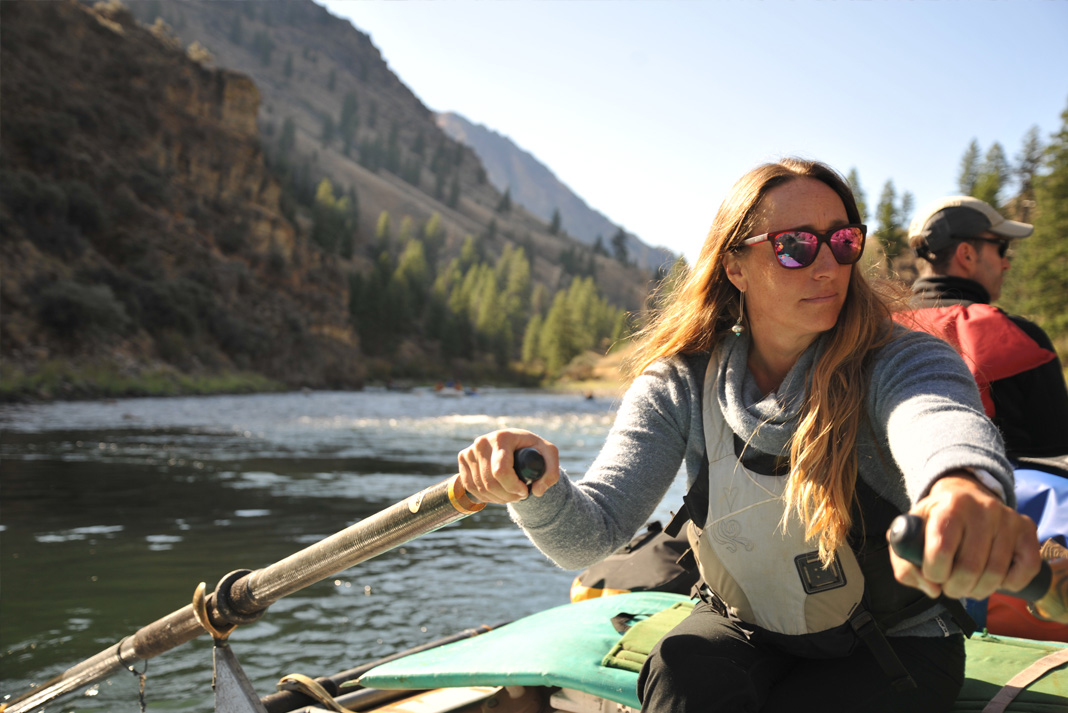
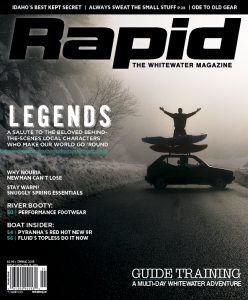 This article was first published in the Spring 2015 issue of Rapid Magazine.
This article was first published in the Spring 2015 issue of Rapid Magazine. 